Do you have trouble with pests in your garden? Instead of fighting pests alone, you could have nature’s help by using helpful insects. Beneficial insects can control pests by eating them. Encouraging beneficial garden insects to live in your garden may be one of the most efficient pest control methods.
Gardening organically requires measures to ensure beneficial insects’ survival, such as providing shelter and growing nectar and pollen plants. These insects help reduce the need for chemical pesticides and insecticides, making them a desirable addition to your garden for natural pest control. Below we learn about the best beneficial insects for the garden, beneficial insects names, and examples.
What are beneficial insects?
You can be shocked that just approximately 10 percent of the insects that call the typical backyard home are harmful, given that the backyard is home to thousands of insects. The vast majority are either helpful or completely harmless. The following are the three primary types of beneficial insects:
- Predators: Predators are insects that control the population of pests by consuming them. This group includes praying mantids, ladybugs, and the larvae of green lacewings, amongst others.
- Pollinators: They rely on insects such as bees, butterflies, flies, and moths, among others, to ensure the reproductive success of the flowers in our garden.
- Parasitoids: Insects that parasitize other insects also feed on their hosts, but they do it in a manner that is distinct from that of predators. They will deposit their eggs on or inside the harmful insects, and after the eggs hatch, the larvae will feed on the host insects. The majority of species in this group are wasps that live as parasites.
Why are beneficial insects important?
Insects that prey on harmful ones are effective workers in natural pest management. In this case, beneficial insects already present in the environment will complete the task without human help. Insects are beneficial to have around because they eat pests. Significant gardening output loss is lessened, and worldwide crop production is boosted. When it comes to biological pest management, beneficial insects are crucial.
By introducing and controlling predators and parasitoids into the garden, you can employ the first line of defense in natural pest management. With the aid of beneficial insects, we can lessen our reliance on chemical pest control methods, which is a huge step toward creating a more sustainable environment. Many harmful insects and animals have become immune to the effects of chemical pesticides, meaning that controlling them is more difficult.
13 beneficial insects for your garden
Ladybird beetles
These brightly colored insects, which have a dome shape, may have caught your eye on your garden plants. Many common pests, including aphids, whiteflies, mealybugs, thrips, scales, mites, and others with soft bodies, have natural predators like ladybird beetles. Ladybird beetles, both larvae and adults, feed on harmful plant pests. Larvae (the immature stage of insects) consume soft-bodied pests rather than pollen and nectar.
In case you missed it: How to Make Compost Tea for Your Garden: Benefits to the Plants and Application Methods
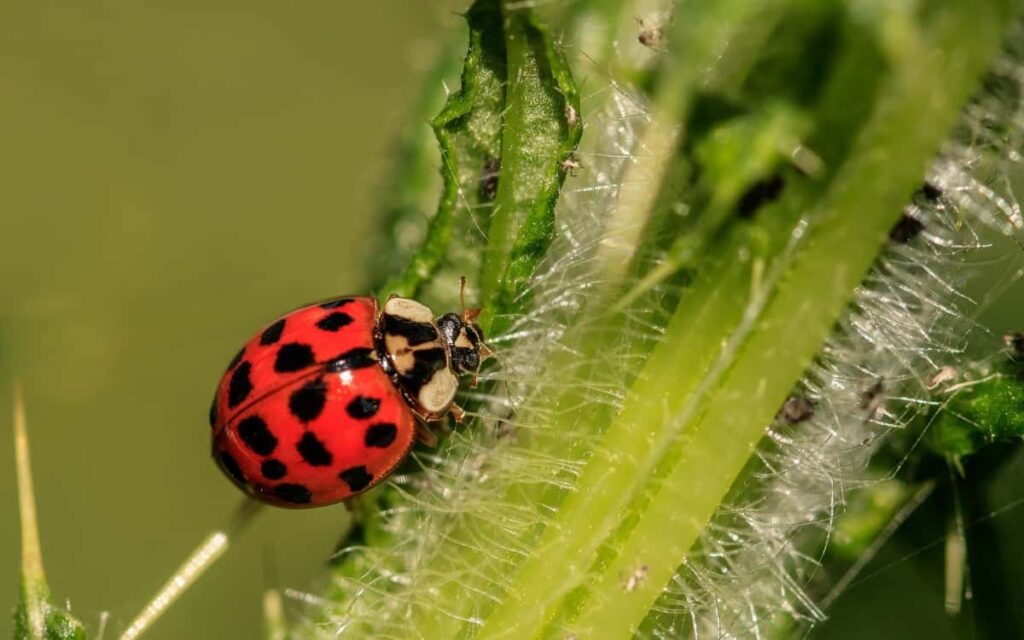
Like larvae, adult ladybird beetles consume nectar and pollen. Ladybird beetle larvae can consume up to forty aphids in one hour, which is a fantastic statistic in and of itself. Ladybugs are beneficial insects that eat a wide variety of pests, including aphids, potato beetles, scale insects, mites, and whiteflies. Fern-leaf yellow, Dandelion, a basket of gold, and dill are just some of the plants you can use to attract these pest-fighting insects to your garden.
The same reason why flowers like Marigolds, Angelica, and Sweet Alyssum attract ladybugs so well is that these small insects adore pollen. Planting “decoy plants” in your garden, like cabbage and radishes, that attract aphids is another successful approach for sustaining a ladybug population. This may sound counterintuitive to some, but these plants will bring in the right number of aphids to keep your ladybug population happy.
Ground beetles
Individual species of ground beetles come in a wide range of sizes, shapes, and colors. Their bodies are typically firm and flattened, ranging in color from dark brown to shiny black. Caterpillars, weevils, thrips, nematodes, snails, and even grasshopper eggs are no match for ground beetles, either as adults or as larvae. Beetles with specialized, hook-shaped mouthparts are another common snail predator.
In case you missed it: The Secret Power of Nature: Making Nature a Part of Your Everyday Life, Benefits of Staying Close to Nature
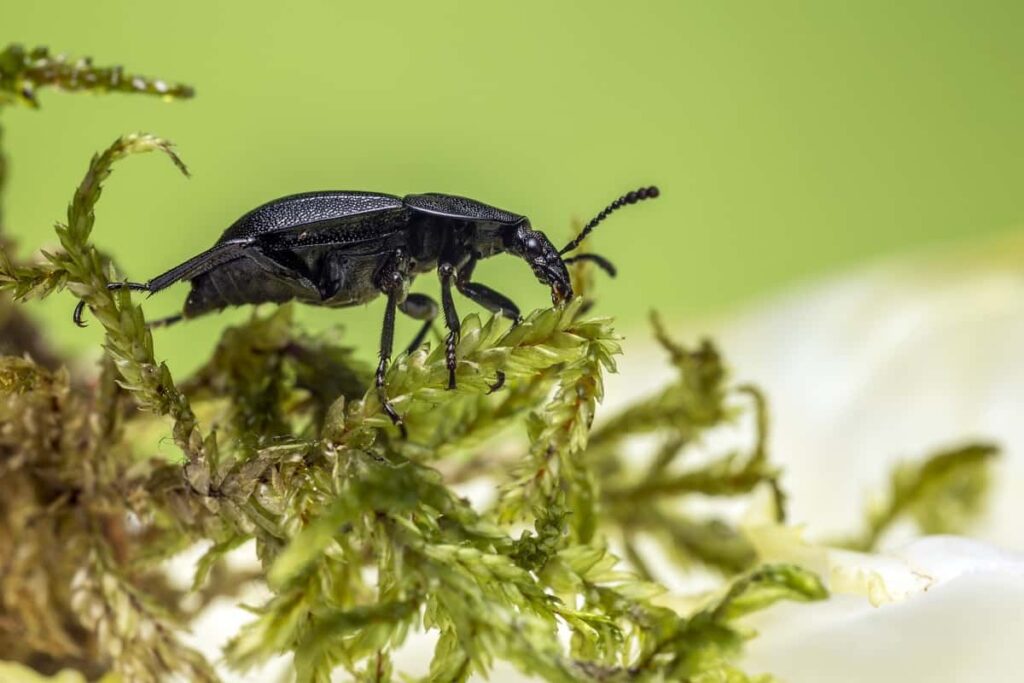
To avoid predators, ground beetles often make their homes in crevices in tree bark, amid boulders, or even beneath the leaves of low-lying plants. A strong layer of mulch over tiny, raised garden beds full of native flowers and grasses can entice these helpful insects to your yard. You can help the beetles by not spraying pest pesticides and giving them places to hide, such as beneath some big rocks or a log.
Spiders
Perhaps you’ve seen some spiders in your garden. Nonetheless, not every one of them is suitable for the plants. Being able to identify dangerous spiders from helpful ones is crucial. As a result, only predatory spiders, generally helpful, are left to complete their task. Wolf spiders, orb-weaver spiders, sac spiders, and jumping spiders are the only ones known to have a significant role in reducing the number of numerous pest insects.
During the growth season, they feast on beetles, mosquitoes, aphids, wasps, grasshoppers, and fruit flies. To encourage spiders to inhabit your garden, place flowers among your veggies. Tall plants, such as sunflowers and maize stalks, are a natural attraction for spiders.
Green lacewing
The green lacewing is one of the best active predators that defend our plants from pests during the growing season. Green lacewing larvae contribute to effective biological pest control in several plant species. Green lacewings consume a wide variety of soft-bodied insects throughout their larval stages. These include aphids, mites, tiny caterpillars, mealybugs, juvenile whiteflies, and even the eggs of certain species.
In case you missed it: Growing Morning Glory Flowers: How to Plant and Care
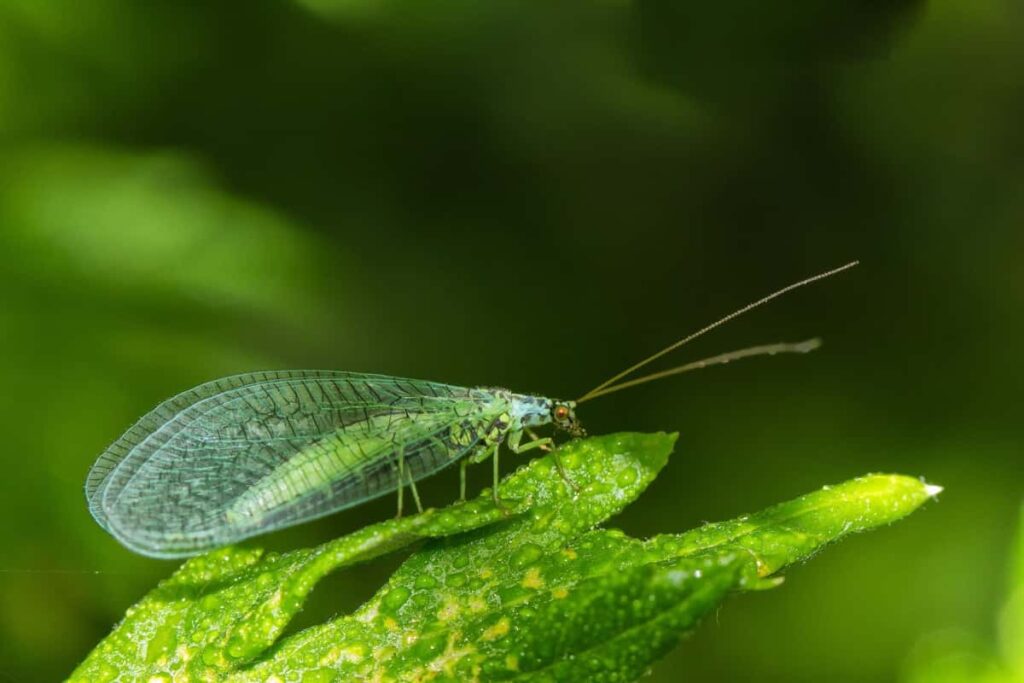
The green lacewing larvae are sometimes referred to as “aphid lions” because of their penchant for feasting on pests. Grass, bushes, and trees are all excellent options for providing the ground cover needed for green lacewing larvae to thrive and make your yard more inviting for this butterfly. Green lacewings thrive on various flowers and herbs, including daisies, dandelion, goldenrod, sunflower, dill, oregano, and mountain mint.
Commercially available green lacewings can be obtained from any number of places or online by horticulturists whose habitats are already suitable for them. If you decide to introduce any of the insects on this list into your garden, you should do so without using any pesticides, natural or otherwise.
Syrphid flies
In their adult stages, syrphid flies take on a form similar to the honey bee. Hoverflies are another name for the yellow and black flies that are common over blossoming plants and pest populations. Syrphid fly adults are effective pollinators, and their offspring prefer to nest close to infestations. Aphids, thrips, scales, and other soft-bodied insects are larvae’s primary food source.
On the other hand, the larvae of syrphid flies resemble those of unwanted caterpillars. The sole distinction is that pest caterpillars have legs while syrphid fly larvae don’t. Flowering plants, including asters, coreopsis, cosmoses, daisies, dill, sunflowers, marigolds, mint, statice, and zinnias, are a magnet for syrphid flies.
Praying mantis
These interesting bugs with triangle heads are common garden visitors. Praying mantids get their name because of how their bodies are positioned, which seems they are bending over in prayer. Among the most helpful predatory insects, praying mantids to consume a wide variety of pests, including caterpillars, beetles, gnats, moths, and crickets. Females sometimes consume male praying mantids shortly after mating. Avoid using pesticides and cultivate a wide range of flowers and herbs (including dill and caraway) to attract praying mantises to your garden.
In case you missed it: How to Use Wood Ash in Your Home Garden for Maximum Benefit
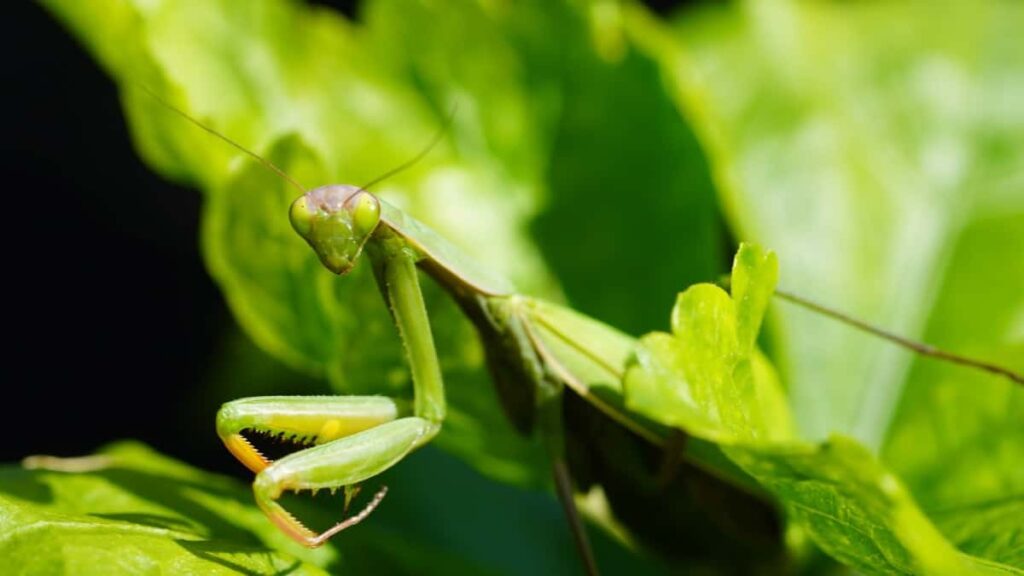
To aid the praying mantis, laying shallow water dishes with a thin layer of rocks (or pebbles) on the bottom is also beneficial. Straw or hay attract praying mantises because they can hide from predators. However, it’s vital to understand that an unchecked mantis population can significantly damage your landscape. This is because, in the absence of alternative food options, mantises would eat any insect, even useful ones like ladybugs and bees.
Minute pirate bugs
One of the most effective predatory bugs, minute pirate bugs begin their quest for food at the beginning of the growing season. These black and white, oval-shaped bugs are most frequent during the hottest days of October. The aphids, thrips, psyllids, spider mites, whiteflies, caterpillars, and insect eggs that plague plants are all fair game for the nymphs and adults of minute pirate bugs.
Include blooming plants and shrubs like marigolds, alfalfa, peppermint, cosmos, caraway, and goldenrod to entice little pirate bugs. When other food sources dry up, the pirate insect might turn to the pollen and nectar of these plants for sustenance. Insecticides and pesticides should be used sparingly, if at all.
Aphid midges
One kind of helpful predatory insect is the aphid midge. Green lacewings may be the most well-known predators of aphids; however, predatory wasps are more efficient and voracious eaters of aphids (60 different species). During its first day of life, a single aphid midge larva can swallow up to 65 of its insect prey. Female aphid midges will often deposit their eggs right in the middle of an aphid colony, where the newly born insects can easily access a ready food supply.
Aphid midge larvae inject toxins into the joints of aphids, rendering them unable to move. Attract them to your garden by providing a water supply and growing a selection of flowers that provide nectar and pollen. Aphid midges, like other insects, need shelter from the wind because of their tiny and flimsy build. Large pebbles carefully placed around the garden’s perimeter can solve this issue.
Predatory mites
Predatory mites are the most effective pest control workers for naturally eliminating spider mites. These small mites, which resemble spider mites in form, are preyed upon by spider mites. The only real difference between predatory and spider mites is that the former has longer legs, which allows them to outrun their victim.
Predatory mite adults consume nuisance mites such as spider mites, thrips, and gnat larvae. Predatory mites, which feast on plant nectar and pollen when no harmful insects are around, are a welcome sight when pest populations are low.
Tachinid
Tachinid flies make up a significant portion of the world’s population of parasitoidal good bugs. And yet, for all their little stature, their contribution to maintaining pest control is enormous. Tachinid flies seem similar to house flies, but their spiky bristles are a dead giveaway. The majority of tachinid flies are parasites that live within their hosts.
In case you missed it: India Fruit Planting Calendar: Month-wise Growing Chart, Gardening Schedule
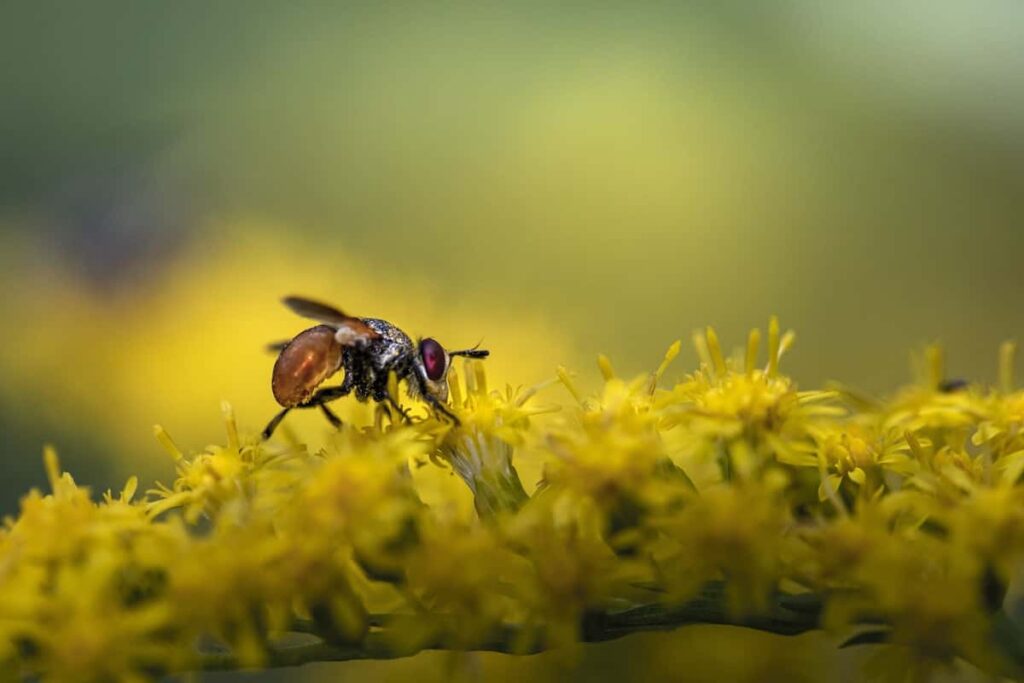
Some adult female tachinid flies deposit eggs within pest populations, while others pierce the host and introduce the eggs from the outside. Maggots of tachinid flies, which grow within the host after being digested, are ingested by the host shortly after the eggs hatch. They ultimately prove fatal for the host. Caterpillars, grasshoppers, sawfly caterpillars, cutworms, beetle adults, and maggots are only some of the pests they target and eat.
Parasitic wasps
Due to their small size, parasitic wasps are often overlooked. Nonetheless, they are of crucial use in biological pest control. Aphids, whiteflies, caterpillars, and spotted cucumber beetles are some of the pests that these helpful insects prey upon and effectively control. Parasitic wasps cannot successfully inject eggs into a host because they lack an ovipositor. They instead deposit their eggs on plants that their prey will devour. When a bug eats an egg, the embryo develops inside it and finally kills the host.
Bumble bees
To help with plant pollination, bumblebees (and other types of bees) welcome visitors to any garden. The pollen grains adhere to the bumblebee as it flies from blossom to flower, and the bee deposits the pollen on the next flower or plant it visits. Buzz pollination describes this method. Bumblebees play an essential role in the health and prosperity of gardens.
You can attract bumblebees to your yard by planting ground cover and providing them a place to rest between foraging sessions. To avoid dehydration, bees also need water. To solve this, just scatter several shallow dishes filled with water in your yard, where the bees can find them whenever they need a drink. Also, bumblebees are big fans of blossoming fruits and vegetables. Bumblebees love nectaring on flowers, including butterfly weed, poppies, and lilies.
Honey bees
Almost everyone is familiar with honey bees. The honey bee is the most well-known and valuable ecological worker insect. Both people and plants may get several benefits from them. Their role in producing honey and other by-products from beehives is well-known for its economic significance. Besides this, honeybees are the most crucial insect for garden success. They’re crucial for pollination, which is why we celebrate them so much.
In case you missed it: How to Grow Medicinal Plants in the Backyard: Medicinal Herb Gardening for Beginners
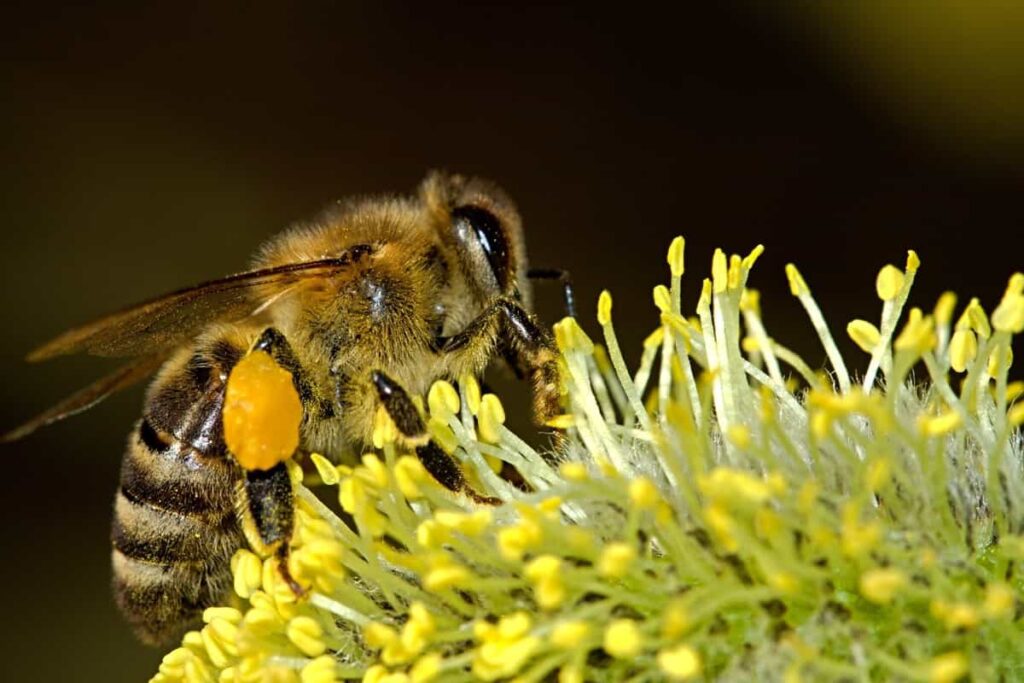
Honey bees take nectar and pollen from flowers, and while they do so, they transport pollen from the stamen, the male reproductive component, to the stigma, the top of the female part, on the same or a different flower. By pollinating flowers, honey bees help ensure the survival of plant species.
What is the most beneficial insect?
Many plants and animals benefit from the presence of lady beetles, and they are well recognized as such. Lady beetles are beneficial predators because they feed on a wide variety of nuisance insects, including aphids, scale insects, mealybugs, mites, and insect eggs as adults and as larvae. Lady beetles have oval bodies and are often an orange or red color with black markings as they reach adulthood.
Lady beetles tend to be around a quarter of an inch long. Larvae of several lady beetle species are long and slender, with flattened bodies and prickly exteriors. They are often black or dark in hue with contrasting bright patches or bands. The lower body is lengthy and lean. Female lady beetle larvae coated in a white flocculent discharge look like pesky mealy bugs. According to research, larvae eat between 200 and 500 aphids.
Are spiders good for plants?
Having garden spiders helps keep pests, like aphids, down, which helps keep disease-causing fungi and bacteria off of plants. Insect pests are responsible for spreading several bacterial and fungal diseases. These pathogens can cause severe tissue death in plants. Reducing the number of pests in your garden can help prevent the spread of disease. A garden with plenty of thriving shrubs and perennials is an ideal environment for several species of garden spiders.
Wolf spiders are particularly drawn to mulch made from grass clippings. While real garden spiders are easily recognizable by their bright yellow and black markings, wolf spiders provide comparable benefits to the garden and are much more aggressive about it. These predators don’t construct webs and wait for prey to come to them; rather, they go out and seek it. They can use the grass trimmings as a hunting ground.
Conclusion
While effective against many pests, broad-spectrum pesticides can also wipe off beneficial insects. Reduce broad-spectrum pesticides and employ less hazardous organic pest controllers to safeguard their population in your garden.
- Flower Garden Designs and Layouts for Beginners
- Planting and Spacing Techniques in Papaya: A Beginner’s Guide
- Growing Gold: Essential Techniques for Planting Pineapples
- How to Make Kalanchoe Plant Bushy: Home Remedies and Solutions
- 11 Reasons Why Your Gardenia is Not Blooming: Home Remedies and Solutions
- Eco Elegance: The Guide to Designing a Drought-Tolerant Landscape
- Gardening on a Slope: Strategies for Hillside Landscaping
- Nourish and Flourish: Top Organic Mulches for Thriving House Plants
- Everything You Want to Know about Indian Mogra Flower: Discover Uses and Growing
- Green Thumb Success: Expert Tips for Cultivating Greenhouse Pumpkins All Year Round
- Maximize Growth & Flavor: The Ultimate Guide to Companion Planting in Herb Gardens
- How to Control Rhododendron Problems Naturally: Home Remedies and Organic Ways to Fix Them
- Natural Magic: The Remarkable Benefits of Cinnamon for Plants
- Best Steps to Revive Dying Tulip with Natural and Organic Treatment
- 10 Reasons Why Your Angel Trumpet is Not Blooming: Remedies and Treatment
- How to Fix Periwinkle Leaf and Flower-Related Problems: Natural Remedies and Solutions
- How to Fix Zinnias Leaf and Flower Problems: Discover Natural and Home Remedies
- Organic Steps to Induce Lemon Tree Flowers: A Comprehensive Guide
- Bloom Booster: Crafting the Perfect Homemade Bougainvillea Fertilizer
- Optimizing Growth: A Guide to Applying NPK Fertilizer for Potted Plants
- 10 Best Homemade Fertilizers for Rubber Plant: DIY Recipes and Application Method
- How to Boost Female Pumpkin Flowers: Effective Steps for More Flowers and High Yields
- Transform Your Indoor Garden: Top Benefits of Pink Salt for Houseplants
- 10 Best Homemade Fertilizers for Peacock Plants (Calathea): Easy DIY Guide
- Unlock Blooms: 9 Reasons Why Your Potted Chrysanthemum is Not Blooming
- 8 Reasons Why Your Potted Hibiscus is Not Blooming: Fix it with Simple Solutions
- Unlock Blooms: 9 Key Reasons Your Potted Frangipani Won’t Flower
- 10 Reasons Why Is My Ice Plant Not Blooming: Remedies and Treatment
- 10 Reasons Why My Potted Hydrangea Not Blooming: Treatment and Remedies
- 10 Reasons Why is My Wisteria Not Blooming: Remedies and Treatment
- 10 Reasons Why is My Goldfish Plant Not Blooming: Remedies and Treatment
- Maximize Your Space: Ultimate Guide to Balcony Gardening with Grow Bags
- 10 Reasons Why Your Iris is Not Blooming: Remedies and Treatment
- 10 Reasons Why Your Anthurium Plant is Not Blooming: Treatment and Remedies
- 10 Reasons Why Your Aquaponic Plants Are Not Flowering: Remedies and Treatment
- 10 Reasons Why Your Agapanthus is Not Flowering: Remedies and Treatment